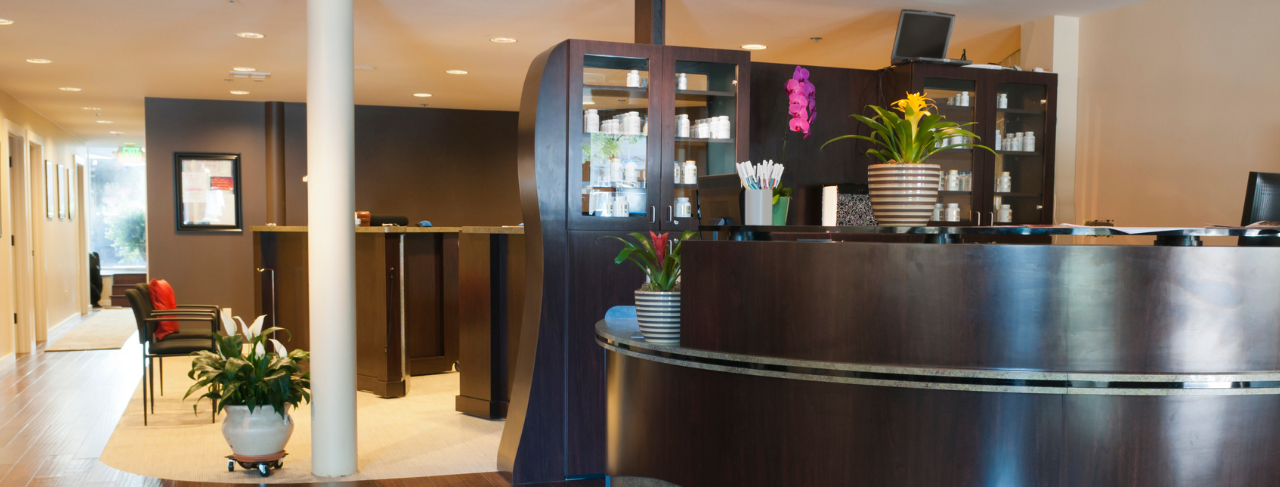
Best Colors for a Medical Facility
Posted on June 3, 2019
Wall colors can turn up the creativity or cooperativeness, and businesses use that to their benefit. When it comes to healthcare facilities, color can help bring healing and optimism into a room. If your medical office is ready for a renovation, you might be asking what colors are best for a medical facility?
Medical Facility Paint Colors
When you head into a paint job of any sort, it’s important to choose colors that lend themselves to the goal of the room. Medical facilities can increase happiness, healing and more with just a color choice. Since the days of sterile, stark-white waiting and patient rooms are gone, here are some colors to consider.
Red
The warmth in red brings vitality and energy to a room. Blood pressure and adrenaline are increased with it, so avoid it in rooms for patients with hypertension. When used moderately, the color can help stimulate appetite and alleviate depression.
Orange
Orange has been widely accepted for use in children’s hospitals due to the benefits of the color. It gives off warmth, joy and happiness. This could be due to the association with oranges and their Vitamin C antioxidant properties. The fruit can fight free radicals and the color can improve attitudes and outcomes.
Yellow
When it comes to healing colors, yellow should top your list. Besides being bright and cheery, the color can stimulate intelligence and detoxify the body. For patients who are sluggish, yellow can help bring creativity and energy into the room. Some doctors say that if it’s overused, yellow can create issues with digestion and stomach problems, as well as cause insomnia.
Green
Natural green gives off balanced healing properties. The color is restful and is known for growth and renewal, something all patients could benefit from. Experts have noted the color is great for circulation, including the heart and lungs. Greenery in patient areas also promotes comfort and equilibrium, good qualities for patient and waiting rooms.
Blue
Blue is known widely for its properties of calm and serenity. Like the sky and sea, blue can help with high blood pressure and fast heart rates. It’s widely used in spas for the serene feel it gives a room, something that can be employed in healthcare facilities. Besides the calming effects, the color is associated with eyes, ears, nose and the senses around those.
Pink
While pink is mostly associated with femininity, it also gives feelings of caring and affection. It’s a color that is healing and soothing. Because of the happiness it brings into a room, places like hospitals and prisons have used it to encourage calmness and reduce erratic behavior.
Purple
Purple, and its cousin violet, are connected with spirit and healing. While the colors are widely connected with insight and higher consciousness, in hospitals purple can help with issues in the cerebral and nervous systems.
How to Use Colors in Hospitals
Use colors associated with particular disorders in rooms used to treat them. Utilize colors that encourage openness, healing and anti-anxiety for rooms that you use for therapy. The colors can increase good outcomes for patients when combined with treatment.
Pediatric treatment areas lend themselves to color therapy. Bringing in color helps keep small patients calm and stress free, while helping caregivers relaxed as well. Since there are normally murals and colorful art on the walls, it’s easy to incorporate these colors in.
If you work with those in the elderly community, take into account that they could be suffering from vision issues. Avoid bright colors and lights, instead make the patients comfortable with lighter counterpart colors. If the area is brightly lit, go less vibrant.
Critical care units can benefit from pastels in blue, violet or green. They are calming and soothing, while reducing stress. For these intense areas, avoid colors of energy and stress like red, yellow or orange.





